In 2010, the U.S. and Canadian governments requested the Institute of Medicine (IOM) to review the Dietary Reference Intakes for calcium. It resulted in revisions that included some slight increases to the daily Recommended Dietary Allowance (RDA) for certain life stages. Those recommendations still stand today.
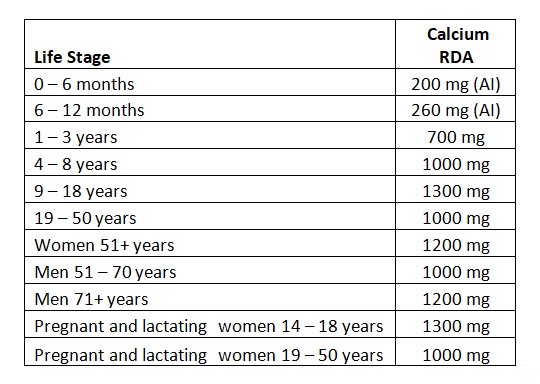 For infants, an Adequate Intake (AI) level is given. Based on observed or experimental approximations, AI is used for those early life stages in which an RDA cannot be determined.
For infants, an Adequate Intake (AI) level is given. Based on observed or experimental approximations, AI is used for those early life stages in which an RDA cannot be determined.
But the chart above doesn’t tell the whole story. Despite being in the same category, a 30-year-old woman and a 30-year-old man likely have different calcium needs. Particularly when you consider their different sizes, metabolisms, and varying hormone levels (hormones have a big effect on bone health!). And did you now those numbers are not your minimum needs? In this post, I’ll cover what those RDA values mean and how they differ from the DV on nutrition fact statements. I’ll also explain why high calcium consumption might not be a good thing. And I’ve included resources for obtaining adequate calcium on a dairy-free diet.
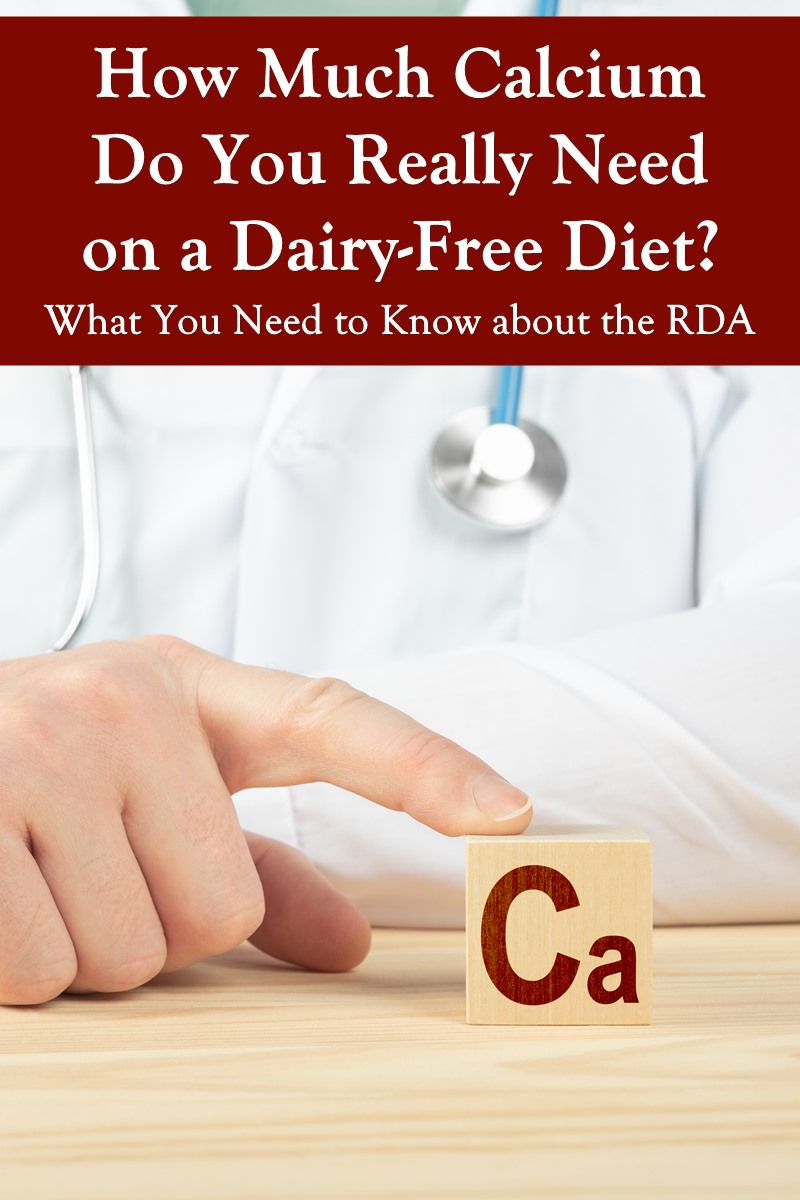
Can You Take Too Much Calcium?
Some people may view the RDA numbers as minimum intake values, and be tempted to follow a “more is better” approach. But the IOM warns against this. Higher intake levels of calcium “have not been shown to confer greater benefits, and in fact, they have been linked to other health problems.”
The IOM also provided Tolerable Upper Levels (UL) that represent the safe limit for daily calcium consumption (as high as 3000 mg for certain life stages), but this isn’t a number to strive for. On the contrary, they determined that the “risk for harm” increases when calcium intake surpasses just 2000 mg per day for most healthy individuals. This may sound like an unrealistically high number, particularly in a diet void of dairy milk. But supplements and food fortification make it quite easy to exceed.
It should also be noted that the RDA is set high enough to cover an adequate amount for almost all healthy people in the noted life stages (regardless of size). Many individuals may require less. To clarify what this means, the IOM states, “Women over 50 and both men and women 71 and older need no more than 1,200 milligrams per day to ensure they are meeting their daily needs for strong, healthy bones.”
The National Health Service (NHS) in the United Kingdom actually opts to set their standards as a minimum requirement. They state that adults aged 19 to 64 need 700 milligrams of calcium per day. They warn against exceeding 1500 milligrams of calcium per day, and say side effects can begin at that level.
But Does Higher Calcium Prevent Osteoporosis?
Again, more isn’t always better. We do need adequate mineral ntake to maintain strong bones and to keep our bodies running properly. But some medical experts think North American calcium recommendations are excessive. Their suspicions were aroused when the landmark Nurse’s Health Study found a correlation between higher calcium intake and hip fracture rates.
Later, a large Swedish study found optimal calcium intake for women over 50 was around 700 to 800 mg per day for fracture prevention. Below this threshold there was a higher hip fracture risk, but above it, they also saw diminishing returns.
Studies have battled back and forth on this topic. But many researchers still point to the fact that countries with the highest calcium intakes tend to have higher than average rates of osteoporotic fractures. The following shows a map of the average daily intake of calcium, followed by a chart of hip fracture rates in studied countries.
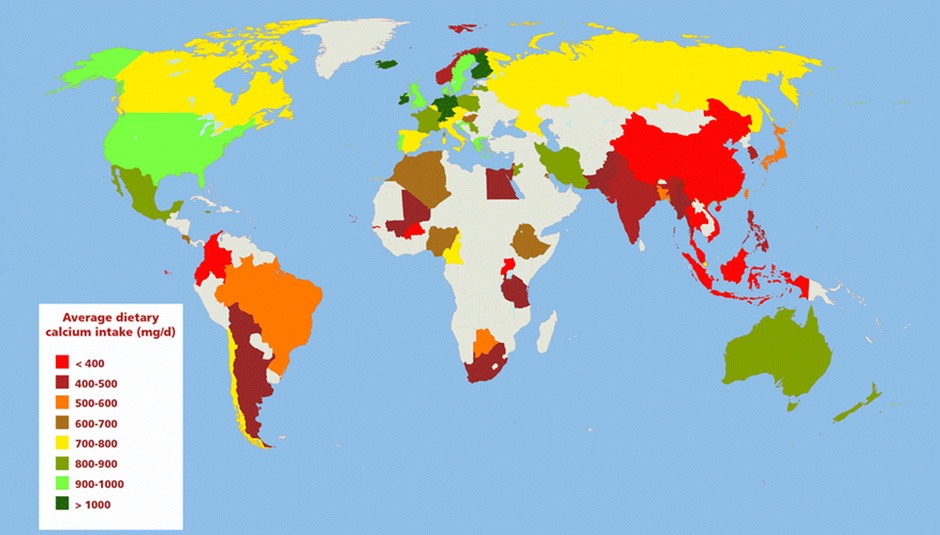 From Global dietary calcium intake among adults: a systematic review
From Global dietary calcium intake among adults: a systematic review
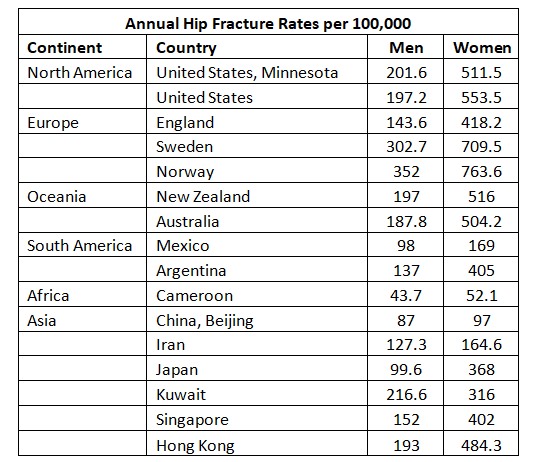 From Geographic Variation in Osteoporotic Hip Fracture Incidence
From Geographic Variation in Osteoporotic Hip Fracture Incidence
Some argue that racial differences should also be considered. For example, studies have pointed to reduced calcium needs for Black Americans. This is exemplified in the difference between Black Americans and Black South Africans. The age-adjusted annual rate of hip fracture for Black South Africans is 69 women and 73 men per 100,000. But Black Americans have an annual hip fracture rate of 306 women and 238 men per 100,000. Based on these numbers, Black Americans have 3 to 4.5 times the risk of hip fracture as Black South Africans, and their calcium intake is significantly higher.
The Bottom Line
Calcium is an essential mineral that we must consume through food or supplements. It’s important to work with your doctor to ensure you have an adequate intake, even on a dairy-free diet. But many researchers lean away from recommending high calcium consumption. Instead, they are focusing on exercise and dietary balance with other vitamins and minerals, like vitamin D and magnesium, to prevent calcium loss and stave off osteoporotic fractures.
Why is the Daily Value on Nutrition Fact Statements Different?
As mentioned, RDA values were established from recommendations by the IOM. They are used as a guide for daily vitamin and mineral intakes. The Daily Value (DV) is set by the Food & Drug Administration (FDA) and is the amount used to calculate the % Daily Value on nutrition fact statements.
The FDA opted to raise the DV for calcium to 1300 milligrams several years ago. This means, technically, it is too high for many people. It’s set at the ceiling to “cover” the needs for most people. For example, a healthy 30-year-old person will be adequately covered (under the RDA) with just 77% of the DV in a day. And a smaller-than-average person might need even less.
Nutrition fact statements are general guides, but your personal vitamin and mineral needs might differ. Health and diet information is not one-size-fits-all. It’s important to assess your individual requirements with your physician. Fortunately, most nutrition fact statements now include both the milligrams of calcium and the daily value percentage. The milligrams are actual numbers you can count on, regardless of your personal RDA.
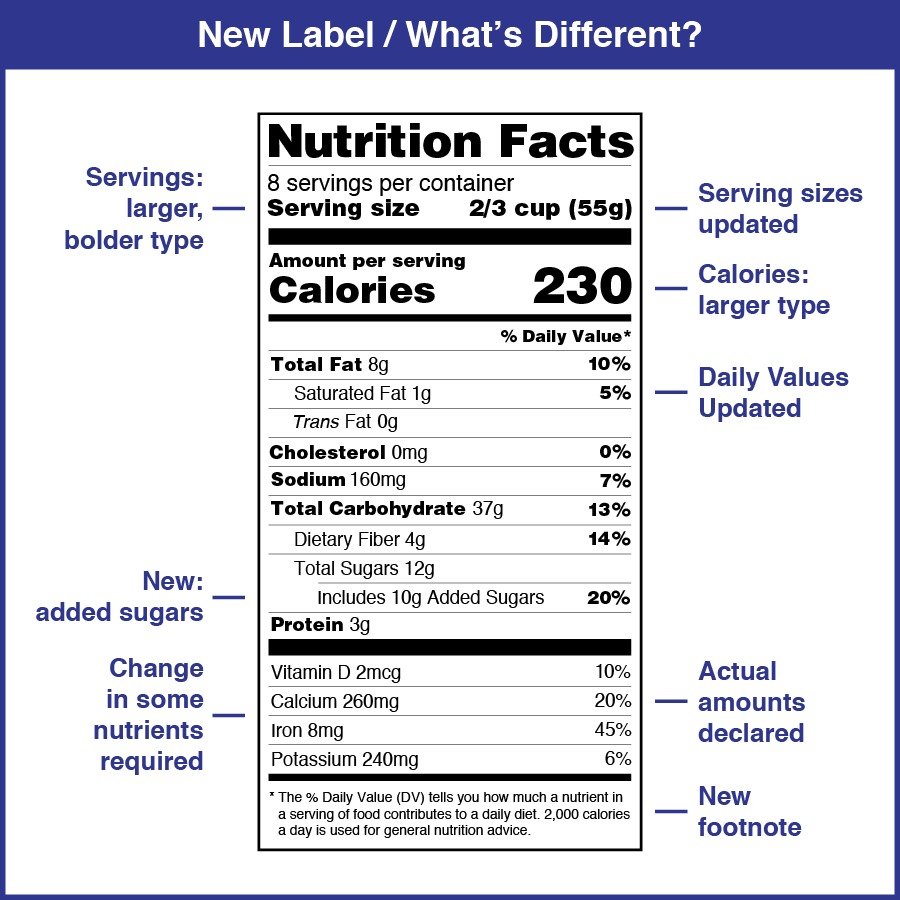
How Can I Get Enough Calcium on a Dairy-Free Diet?
Calcium is naturally abundant in many foods, well beyond dairy. It’s also readily available in fortified foods and supplements. Here are some more helpful guides to help you achieve your RDA for calcium.
- The Dairy-Free Calcium Chart with Over 100 Foods
- Calcium-Rich Foods and Over 25 Everyday Ways to Enjoy Them
- How to Choose the Best Dairy-Free Calcium Supplements
- Calcium Fortification in Dairy-Free Milks, by Brand
And remember that your body is limited on how much calcium it can utilize at once. For an average person, most recommendations are for no more than 500 milligrams at a time.
This post is for informational purposes only, and should not be construed as medical advice. Always consult your physician before making any change in diet.


1 Comment
Pingback: Will I need to supplement with any vitamins? - Go Dairy Free